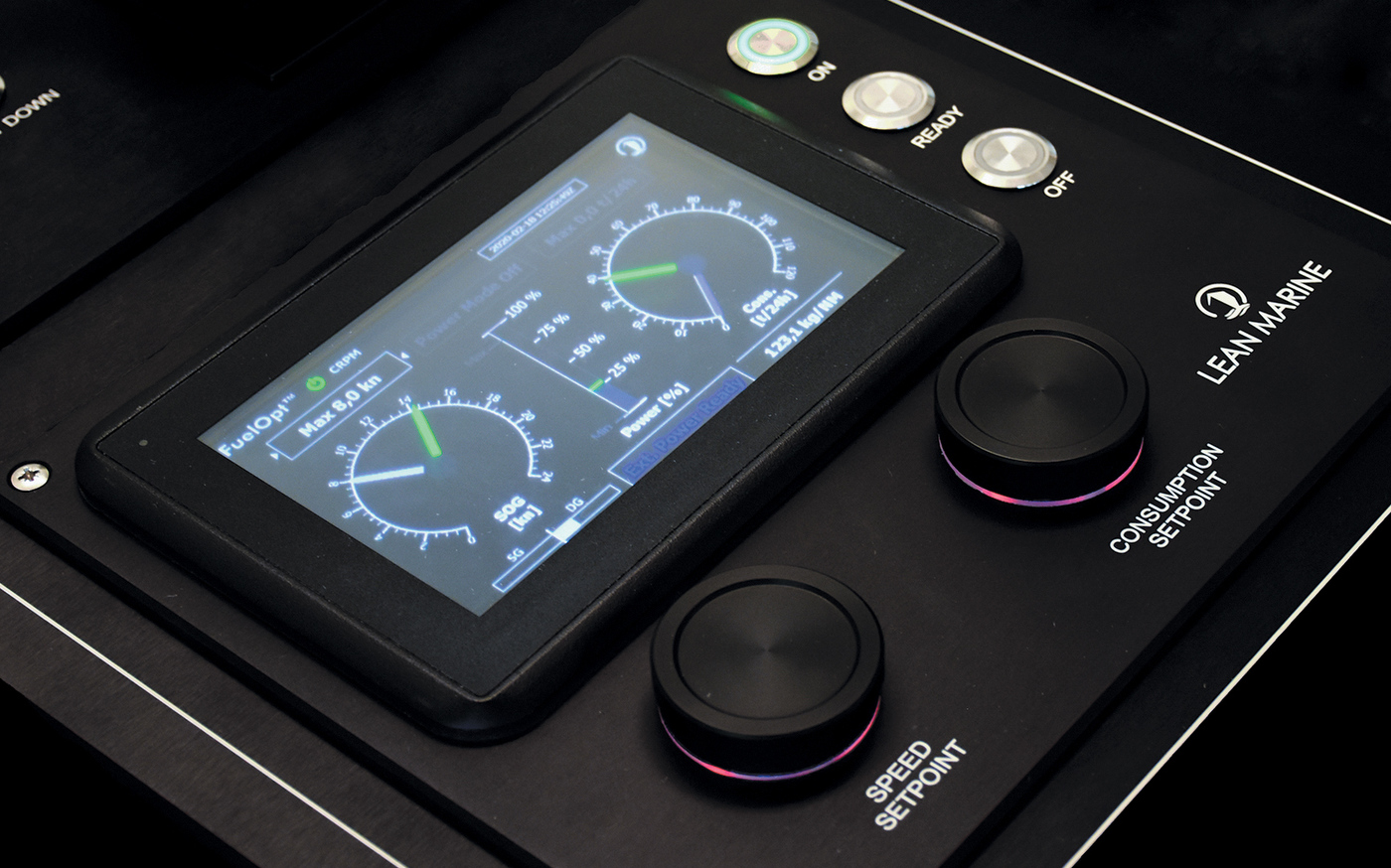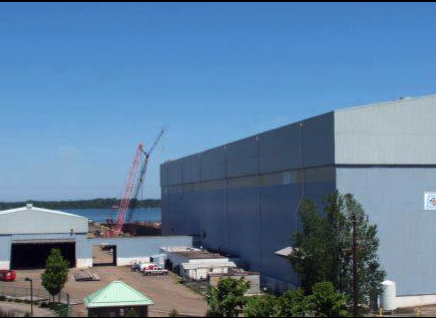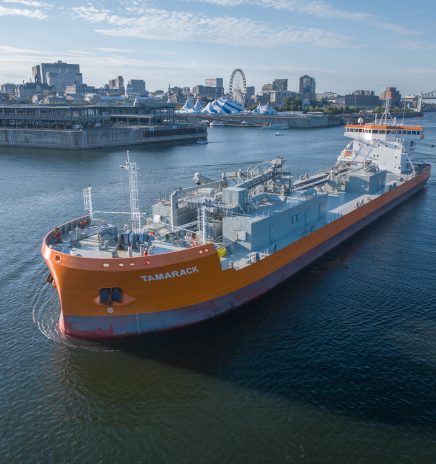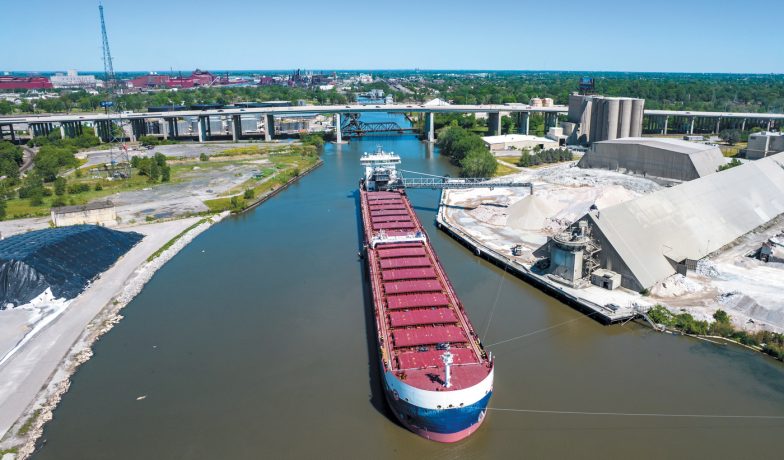Decarbonizing for Success: Reduced Fuel Costs and Enhanced Efficiency Demonstrated Onboard Algoma Conveyor
Given the wide disparities in fleet ages and sizes, operating conditions, budgets and priorities, viable decarbonization solutions must be agile if they are to deliver greater vessel efficiencies, minimized operational disruptions and lowered emissions. Offering a wide variety of solutions that achieve tangible results underpins the ethos at Yara Marine Technologies.
Real-Time Fuel Savings
Algoma Central Corporation has been seeking solutions to reduce the carbon footprint of its fleet while improving overall operational efficiency. In 2021, Yara Marine Technologies retrofitted the Equinox Class bulk carrier Algoma Conveyor with the FuelOpt propulsion automation system and delivered impressive fuel-saving results.
Steve Wright, vice-president of engineering at Algoma says: “The use of the FuelOpt system onboard the Algoma Conveyor led to an estimated 10% reduction in fuel usage while operating at full speed. This is a substantial efficiency gain and a marked success for both our companies. We have decided to equip eight more Equinox Class vessels with the system in spring 2022, presuming roughly a 5-10% efficiency gain. We will consider installations on our older vessels in 2023 and 2024.”
Once installed onboard the Algoma Conveyor, the add-on propulsion automation system ensured that propulsive power was always optimized and adapted to changing environmental conditions based on the commands set from the bridge. This enabled steady and predictable shaft power and removed costly variations in speed and power resulting in real-time fuel savings and emissions reductions.
Although the fuel consumption and emission reductions may vary from ship to ship, the technology is capable of potentially offering up to a 15% efficiency gain a significant reduction in a vessel’s carbon footprint. Delivering the best results requires crew training so that they capitalize on the benefits afforded by the technology, rather than falling into old habits when operating machinery onboard. FuelOpt simplifies this process via its intuitive interface that facilitates the crew’s control of essential factors like speed, fuel consumption, engine power or a combination of these.
With Algoma Conveyor equipped with a controllable-pitch propeller, the system was able to further optimize propulsion by acting as a dynamic tuning system. FuelOpt regulated the propeller’s pitch and RPM separately to operate the engine and propeller at optimal conditions to produce the maximum amount of propeller thrust with the minimum amount of power. This optimized energy usage took place as the engine and propulsion line were automatically monitored to avoid the risk of overload on the systems, further adding to operational safety.
Navigating Inland Waterways
The Algoma Conveyor, which operates in the Great Lakes/St. Lawrence Seaway, has distinct operational requirements from a bulker conducting deep-sea operations. While operations are similar to those in the deep sea while transiting through the large lakes, the river and canal passages that connect the lakes to the Atlantic Ocean have relatively unique traits. Vessels transiting river or canal passages need to maintain the near-constant speed of usually 8 to 10 knots indicated for the region, whereas lake or deep-sea operations can adjust for greater fuel consumption and emissions.
This installation provided further proof that FuelOpts functionality remains uncompromised regardless of whether vessel operations are taking place in deep sea or within the specific needs of inland waterways. The system allows users to switch between different operational modes without affecting the ability to regulate the most efficient pitch and RPM combination under variable conditions.
When the commands were used in combination, such as when the Algoma Conveyor operated with a command combination of speed and fuel consumption, FuelOpt ensured that appropriate efficiencies were obtained. This allowed the vessel to avoid any overconsumption of fuel in harsh conditions, such as high swells and winds.
“Lake operations are similar to deep-sea operations,” explains Wright. “Dynamic pitch and RPM regulation enables significantly enhanced vessel efficiency. However, our vessels also spend a lot of time maneuvering and operating at reduced power and in speed restricted zones. FuelOpt optimizes efficiency for us during these transits, acting like advanced cruise control. In the speed-restricted zones, for example, the crew can set a speed at or below the speed limit and trust the system to maintain that speed as it will automatically adjust its operational parameters to account for changing conditions such as wind, waves and river currents.”
With further planned installations in 2022, Algoma’s Equinox Class vessels will see an immediate reduction in their carbon footprint, reaping the benefits of fuel savings and greener operations.
Futureproofing and Compliance
FuelOpts benefits also go beyond immediate fuel savings for shipowners and operators. The system will allow the operator to easily comply with the International Maritime Organization’s (IMO) incoming Efficiency Existing Ship Index (EEXI) and Carbon Intensity Indicator (CII) regulations in January 2023. The regulations are intended to jumpstart a rapid reduction in industry carbon emissions.
EEXI requires the industry to account for retrofitting and equipping vessels to address technical measures through engine or shaft power limitations (ShaPoLi), propulsion optimization, energy-saving devices or the like.
FuelOpt allows ship operators to safely implement ShaPoLi by setting an upper limit to power output without any modification to existing machinery onboard. It should be noted that the set commands can be overridden in an emergency, enabling the crew to access to the engine’s full power. Thus, vessels equipped with this solution will comply with the framework of EEXI through a simple software upgrade.

Importantly, vessels with FuelOpt installed are prepared for future compliance with the CII framework. A vessel’s CII rating (which ranges from A to E) is pertinent to ships of 5,000 gross tonnage and requires that they demonstrate consistent improvement in their fleet operations. FuelOpt not only gives operators and their crew’s control over vessel performance but also gathers vast amounts of data in real time. Information from the propulsion line, engine and more are gathered and integrated into analytical software to demonstrate CII compliance and to improve overall fleet performance.
Data-Driven Efficiency
“The process of tracking and reporting continuous improvement marks a clear shift towards more data-driven vessel operations. And while digitization and automation are still viewed with a certain amount of skepticism, the clear and present need to have and record good data information that is valuable and useful in operational improvement is undeniable,” says Wright.
FuelOpt users can choose whether to transmit their vessel data to Yara Marines’s smart cloud-based performance management and reporting software, Fleet Analytics, or to a system offered by a third party. Stakeholders can then analyze their operational performance to learn from past voyages and improve forthcoming ones, with the aim of improving overall operational efficiency.
In effect, FuelOpt and a fleet management system combine to offer a performance management tool that evaluates collected vessel performance and fuel consumption data alongside an automation tool that allows for extremely precise control on operational parameters. This combination allows companies to maximize the success of planned efficiency improvements. It also meets the criteria for CII compliance, while leaving operators the flexibility to incorporate complementary technologies that emerge in the future.
Yara Marine aims to offer multi-faceted solutions that enable shipping’s drive towards Net Zero and go beyond mere compliance with directives, to genuine and longstanding benefits to customers. Every drop of fuel saved is one step closer to the goals for decarbonization. Enabling cleaner operations globally is one step closer to saving the planet and building a better and brighter future.

Donjon Marine Acquired by Investment Firm Tallvine
Donjon Marine Co. LLC, which operates a shipyard in the Great Lakes, has been acquired by Miami-based investment firm Tallvine Partners. Donjon Marine was founded in 1964 and operates dredging,... Read More

M/V Tamarack is First Newbuild Cement Ship in the Great Lakes in 20 Years
M/V Tamarack arrived at the Port of Montreal on August 22, completing her maiden transatlantic voyage and marking a major milestone in North American shipping. Owned by Eureka Shipping, a joint... Read More


